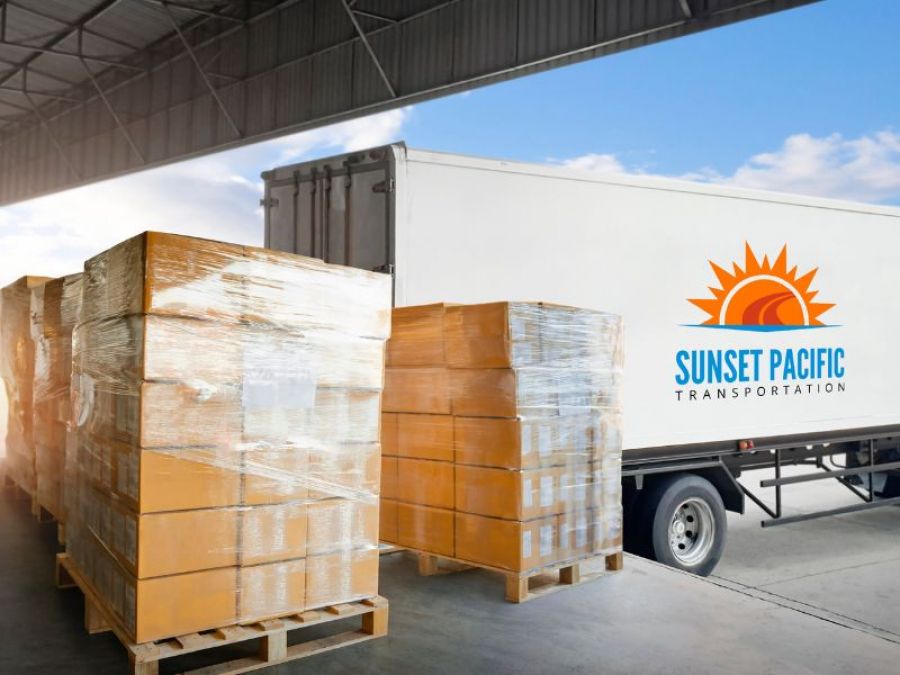The Benefits of Partial Truckload Shipping for Small Businesses

Partial Truckload (PTL) shipping suits businesses with cargo larger than LTL but not enough for a full truck. It shares truck space for cost efficiency while minimizing handling and transit times. Small businesses often face shipping challenges due to limited resources for favorable rates on smaller shipments. PTL offers cost-effective transportation for larger loads without booking a whole truck. It adapts to varying shipment sizes, optimizing logistics for small businesses.
What is Partial Truckload Shipping?
With Partial truckload shipping (PTL) , shippers utilize only a portion of a truck trailer instead of booking the entire trailer’s capacity, as is the case with FTL. This approach is particularly beneficial for shippers with freight volumes that exceed the typical LTL range but don’t necessitate a full truckload. Some defining characteristics of PTL are:
Shipment Size: PTL shipments are typically larger than standard LTL shipments but smaller than FTL shipments. They often range from 6 to 18 linear feet of trailer space, although this can vary depending on the carrier and region.
Cost-Efficiency: PTL is cost-effective because shippers only pay for the space they use within the trailer. This cost structure makes it an attractive option for businesses with shipments that fall between the volume of an LTL and an FTL.
Flexibility: PTL offers flexibility in accommodating shipments of various sizes. Shippers can adjust the amount of space they need based on the volume of their goods, allowing them to optimize costs. This flexibility is particularly beneficial for businesses with irregular or varying shipping needs.
Reduced Handling: Unlike traditional LTL shipments that undergo multiple handling and consolidation at terminals, PTL shipments typically involve fewer stops and less handling. This can result in reduced risk of damage and faster transit times.
Direct Routes: PTL shipments often follow more direct routes to their destinations, further contributing to shorter transit times compared to LTL shipments. This efficiency is attractive for shippers with time-sensitive deliveries.
Cost-Savings
PTL allows shippers to secure dedicated space for their cargo without the expense of booking an entire truck, reducing shipping costs significantly. By sharing truck space with other shippers and minimizing handling and transit times, PTL offers cost savings that make it an attractive option for optimizing logistics budgets while efficiently transporting larger shipments.
Improved Transit Times
With PTL, multiple smaller shipments are consolidated onto a single truck, leading to fewer stops and transfers. This results in more direct routing, minimized handling, and reduced delays, ultimately expediting delivery. PTL also offers flexibility in scheduling and dedicated space, ensuring that small businesses can meet tighter delivery deadlines and achieve faster transit times for their cargo.
Reduced Handling and Damage
With fewer touchpoints and less chance for cargo to be moved or shifted, PTL helps ensure that goods remain secure and well-protected throughout the journey, reducing the risk of damage or loss. This added protection is particularly beneficial for delicate or sensitive cargo, making PTL a preferred choice for businesses seeking to safeguard their goods during transportation.
Environmental Benefits
PTL optimizes space within trucks, leading to fewer partially empty vehicles on the road, which, in turn, reduces fuel consumption and greenhouse gas emissions per unit of cargo. By consolidating shipments, PTL minimizes the need for additional trips, contributing to lower overall transportation-related pollution.
Flexibility and Scalability
Unlike Full Truckload (FTL) , where you need to fill an entire truck, PTL allows businesses to reserve only the space they need within a truck. This flexibility is particularly advantageous for small businesses with fluctuating shipment sizes. Whether you have a smaller load one week and a larger one the next, PTL can adapt to your specific requirements.
When to Consider PTL
Medium-Sized Shipments: When your shipment is too large for Less-Than-Truckload (LTL) but doesn’t require a full truck, PTL offers a cost-effective solution .
Mixed Shipments: If you have a combination of palletized and non-palletized cargo, PTL allows flexibility in accommodating various load types.
Fluctuating Volumes: When your shipment volumes vary from week to week, PTL’s flexibility allows you to adapt without overcommitting to space or costs.
Time-Sensitive Deliveries: For shipments with tight delivery windows, PTL’s direct routing and reduced handling can expedite transit times.
Cost Optimization: PTL is often more cost-effective than Full Truckload (FTL) for medium-sized shipments, helping businesses maximize their logistics budgets.
How to Get Started with PTL
Assess Your Shipment Needs: Evaluate your typical shipment sizes and frequency. Identify if your shipments fall between Less-Than-Truckload (LTL) and Full Truckload (FTL) to determine if PTL is a suitable solution.
Find Reliable PTL Providers: Research and identify PTL carriers or logistics companies that serve your routes and regions. Look for providers with a track record of reliable service.
Request Quotes: Contact PTL providers and request quotes for your shipments. Provide accurate information about your cargo, including dimensions, weight, and any special requirements.
Compare Costs: Compare the PTL quotes with other shipping options, such as FTL and LTL, to ensure that PTL offers cost savings for your specific needs.
Conclusion
To summarize, small businesses should consider Partial Truckload (PTL) as a cost-effective shipping option for medium-sized shipments. It avoids the expense of a full truck, leading to cost savings. PTL reduces handling, minimizes damage risks, and ensures faster delivery than Less-Than-Truckload (LTL). Its flexibility accommodates varying shipment sizes, making it adaptable and budget-friendly. PTL aligns with sustainability goals by optimizing truck space, reducing emissions, and minimizing environmental impact. Small businesses can optimize logistics, cut costs, and meet transportation needs effectively with PTL.










